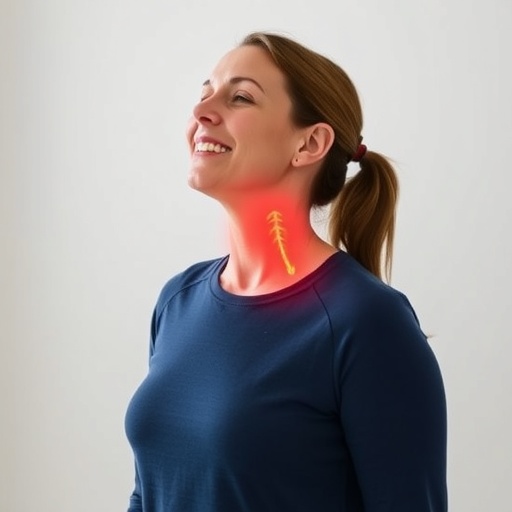Engineered strands of DNA — nanoscale tools called "nanoswitches" — could be the key to faster, easier, cheaper and more sensitive tests that can enable high-fidelity detection of biomarkers indicating the presence of different diseases, viral strains and even genetic variabilities as subtle as a single-gene mutation.
"One critical application in both basic research and clinical practice is the detection of biomarkers in our bodies, which convey vital information about our current health," says Wesley Wong, PhD. "However, current methods tend to be either cheap and easy or highly sensitive, but generally not both."
That's why Wong and his team have adapted their DNA nanoswitch technology — previously demonstrated to aid drug discovery and the measure of biochemical interactions — into a new platform that they call the nanoswitch-linked immunosorbent assay (NLISA) for fast, sensitive and specific protein detection, which they reported this week in a new paper in Proceedings of the National Academy of Sciences.
"It's a 'best of both worlds' approach," says Wong, senior author on the paper, who is a principal investigator in the Boston Children's Hospital Program in Cellular and Molecular Medicine, an assistant professor at Harvard Medical School and an associate faculty member at the Wyss Institute for Biologically Inspired Engineering at Harvard University. "This technology could translate into laboratory and point-of-care tests that are as affordable and easy to use as at-home pregnancy tests, but are much more sensitive and accurate."
The NLISA platform uses a process call gel electrophoresis to screen synthesized, single strands of DNA "reagents" that change their shape in the presence of a specific biomarker. They begin as long, linear strands of DNA, but are decorated with proteins that bind to a matching protein biomarker of interest. Once exposed to that matching biomarker, the proteins bind to it and cause the strand of DNA to bend into a loop.
In combination with gel electrophoresis, that shape change makes it extremely easy to detect whether or not the biomarker of interest is present. In gel electrophoresis, an electric field pulls molecules through a porous gel. Linear DNA nanoswitches move much faster through the pores in the gel, while triggered nanoswitch loops move much slower because of their clunkier shape.
"Simply put, the distances the nanoswitches travel through the gel indicate whether a biomarker is present or not?," says first author Clinton Hansen, PhD, a postdoctoral fellow in the Wong lab.
'Run the gel'
Take, for example, prostate-specific antigen (PSA), which is a blood serum marker used to test men for prostate cancer. To demonstrate their NLISA system, Wong and his team spiked blood serum samples with varied levels of PSA. Then, combining the nanoswitch reagents for PSA with the serum samples, they performed gel electrophoresis on the mixture. The team was able to detect the presence of PSA with higher sensitivity in less volume than with comparable assays.
In addition, during another proof-of-concept demonstration, Wong's team showed that their NLISA platform could distinguish between highly-similar viral strains of Dengue fever in 45 minutes or less.
"By running a gel, we perturb the nanoswitches with an electric field to reduce false positive results using a process called 'kinetic proofreading,'" Wong explains. "Although similar proteins — such as related viral strains — might initially 'trip' the nanoswitches into loops, these close-but-not-quite-perfect bonds can be broken, leaving behind only true positive results. This allows us to discern between viral strains that may even be different by just a single gene mutation."
The NLISA system has the potential to become a standard for protein detection, Wong suggests, and could even be developed into a portable, handheld device for clinical use.
###
In addition to Wong and Hansen, additional authors of the new study are Darren Yang (Boston Children's) and Mounir Koussa (HMS).
Funding for this work was provided by the Boston Children's Technology Development Fund, the Harvard Blavatnik Biomedical Accelerator, the Wyss Institute, the Arnold and Mabel Beckman Foundation Young Investigator 683 Award and the National Institutes of Health (National Institute of General 684 Medical Sciences Grant R35 GM119537 and National Cancer Institute Grant Q:16 685 R21 CA212827).
About Boston Children's Hospital
Boston Children's Hospital, the primary pediatric teaching affiliate of Harvard Medical School, is home to the world's largest research enterprise based at a pediatric medical center. Its discoveries have benefited both children and adults since 1869. Today, more than 2,630 scientists, including nine members of the National Academy of Sciences, 14 members of the National Academy of Medicine and 11 Howard Hughes Medical Investigators comprise Boston Children's research community. Founded as a 20-bed hospital for children, Boston Children's is now a 415-bed comprehensive center for pediatric and adolescent health care. For more, visit our Vector and Thriving blogs and follow us on social media @BostonChildrens, @BCH_Innovation, Facebook and YouTube.
Media Contact
Erin Tornatore
617-919-3110
@BostonChildrens
http://www.childrenshospital.org/newsroom




